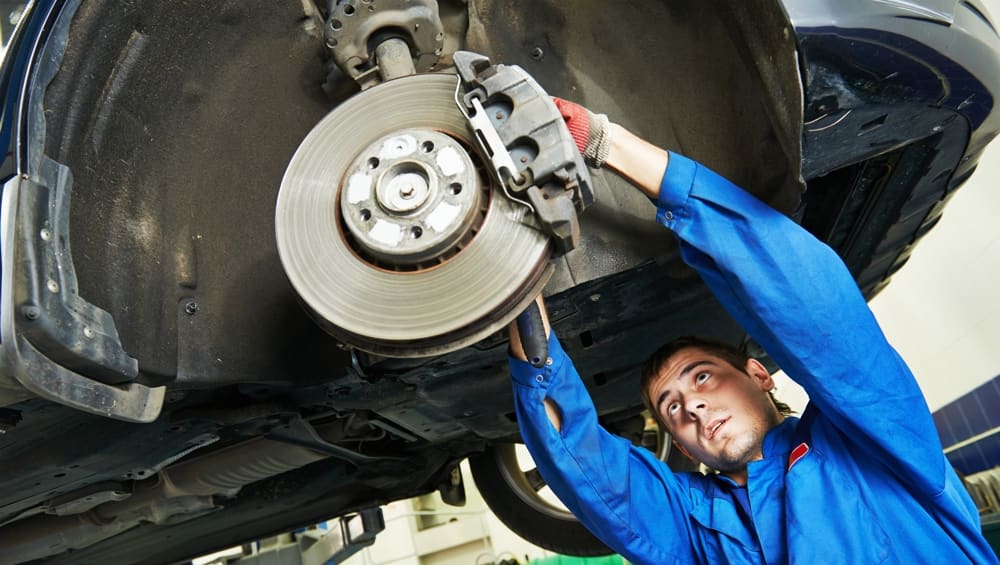Car brakes are fundamental for safe driving, allowing drivers to slow down or stop their vehicles. The braking system converts the vehicle’s kinetic energy (motion) into thermal energy (heat) through friction, reducing speed or bringing the car to a halt. When in need of maintenance or repair, consulting a car brake repair specialist in Brisbane ensures the continued safety and efficiency of your vehicle’s braking system.
Components of Braking Systems
1. Brake Pedal: The driver’s input device that activates the braking system. When pressed, it initiates the process of slowing down or stopping the vehicle.
2. Master Cylinder: Connected to the brake pedal, it generates hydraulic pressure when the pedal is pressed. This pressure is transmitted through brake lines to actuate the brakes.
3. Brake Lines: Channels that carry hydraulic fluid from the master cylinder to the brake assemblies at each wheel.
4. Brake Calipers and Wheel Cylinders: In disc brake systems, calipers clamp brake pads onto a rotating disc to slow the vehicle. In drum brake systems, wheel cylinders push brake shoes against the inner surface of a drum to achieve braking.
5. Brake Rotors (Disc Brakes) and Brake Drums (Drum Brakes): Rotors are flat, round discs mounted on the wheel hubs. Drums are cylindrical surfaces attached to the wheels. These components create friction when pressed by the brake pads or shoes, leading to deceleration.
6. Brake Pads and Brake Shoes: These friction materials make contact with the rotors or drums to create the necessary friction for slowing down the vehicle.
How Different Types of Brakes Work
1. Disc Brakes:
- Operation: When the brake pedal is pressed, hydraulic pressure from the master cylinder forces brake fluid into the calipers. This pressure causes pistons in the calipers to press the brake pads against the rotating brake rotor.
- Friction Creation: The contact between the brake pads and the rotor generates friction, converting kinetic energy into thermal energy. This process slows down the rotation of the rotor and, consequently, the vehicle.
2. Drum Brakes:
- Operation: Similar to disc brakes, pressing the brake pedal builds hydraulic pressure, which pushes brake fluid into the wheel cylinders. These cylinders force the brake shoes to press against the inner surface of the brake drum.
- Friction Creation: As the brake shoes contact the spinning drum, friction is generated, leading to the conversion of kinetic energy into thermal energy. This action decelerates the wheel and the vehicle.
The Role of Friction and Heat
Friction is essential in the braking process. When the brake pads or shoes press against the rotors or drums, the resulting friction creates heat. This heat dissipates into the surrounding air, allowing the vehicle to slow down or stop.
Brake Systems and Heat Dissipation
Effective braking systems are designed to manage heat efficiently to prevent brake fade (a decrease in stopping power due to excessive heat). This is achieved through:
Ventilation: Many modern brake systems have ventilated rotors or drums with fins or vanes that facilitate heat dissipation.
Brake Fluid: High-quality brake fluid with a high boiling point prevents the fluid from vaporizing under extreme heat conditions.
Cooling: Some vehicles are equipped with additional cooling mechanisms like brake ducts or scoops that direct air to the brakes, aiding in heat dissipation.
Anti-lock Braking System (ABS)
ABS is a safety feature that prevents the wheels from locking up during braking, enhancing control and stability, especially in emergency situations.
- Operation: Sensors monitor wheel speed. If a wheel is about to lock, the ABS system modulates brake pressure by rapidly pulsating the brakes to prevent skidding. This allows the driver to maintain steering control while braking hard.
Brake Maintenance and Care
Regular maintenance is crucial for optimal brake performance:
- Brake Pad/Shoe Replacement: Pads and shoes wear out over time. Inspecting and replacing them when worn is essential to ensure safe braking.
- Brake Fluid Checks: Regularly checking brake fluid levels and quality helps maintain proper hydraulic function.
- Rotor/Drum Inspection: Ensuring rotors/drums are within specified thickness limits and free from damage or warping prevents brake issues.
Conclusion
Car brakes are intricate systems that rely on hydraulic pressure, friction, and heat dissipation to slow down or stop a vehicle. Understanding their components and mechanisms is crucial for safe driving and maintaining optimal brake performance. Regular inspection, maintenance, and understanding the signs of brake wear are essential for ensuring your vehicle’s braking system functions reliably.

